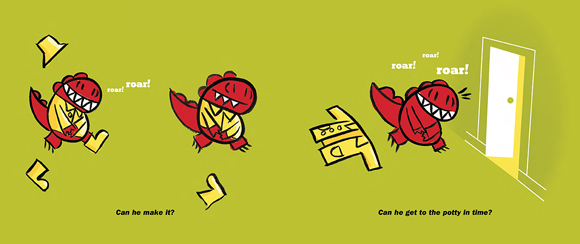The end of days is nigh. There’s nowhere humanity, as a species, can go from this discovery. Nirvana is upon us.
I don’t know exactly what it says about me that reading an article on BBC News about the discovery of a “communal latrine” that dates back to before dinosaurs existed has been the best part of my day so far. Maybe my day’s been kind of meh. Or maybe my inner five year old finds the prospect of a BBC article that uses the word “poo” seven times (I counted) all too thrilling.
The prehistoric port-a-potty was found in the La Rioja province of Argentina and is estimated to be around 240 million years old. That’s about 220 million years older than the previously known oldest toilet, FYI. The dumping ground (I’m sorry) is filled with “coprolites,” or fossilized bits of feces, that weigh several kilograms and are up to 40 centimeters (almost 16 centimeters) wide. To paraphrase Dr. Ian Malcolm: That’s a big chunk of shit.
And according to Dr. Lucas Fiorelli, who discovered the site, “There is no doubt who the culprit is.”
Dr. Fiorelli: Dung Detective. Who wants to write the script with me?
The prehistoric pooper is none other than Dinodontosaurus, the bones of which are all around the dung heap. It was an eight-foot-long megaherbivore similar to modern-day rhinos. Why not do a movie based on them, Syfy?
The prehistoric pooper lived around when dinosaurs were coming onto the scene, give or take a few million years. The discovery of the dung heap, so well preserved because it was under a layer of volcanic ash (“like Pompeii,” says Dr. Fiorelli), tells scientists about the Dinodontosaurus’ behavioral habits—namely that they were herd animals who “had good reasons to poo strategically,” which is all BBC phrasing—and could also provide insight into the biology of the creature and the environment in which it lived. That, in turn, could provide clues as to how dinosaurs came to evolve.
Science is a wonderful thing.
(via: BBC; top image from Dinosaur vs. The Potty by Bob Shea)
Are you following The Mary Sue on Twitter, Facebook, Tumblr, Pinterest, & Google +?









Published: Dec 10, 2013 04:15 pm